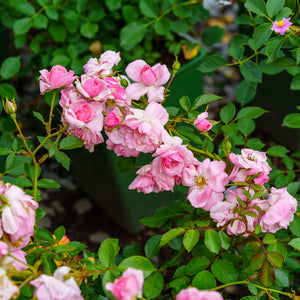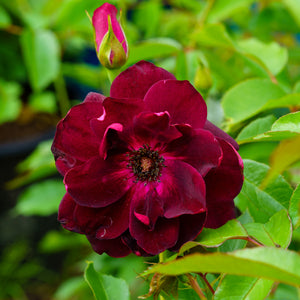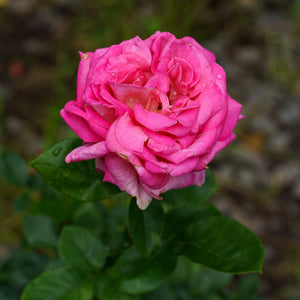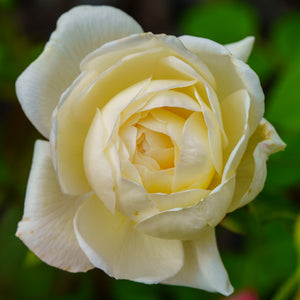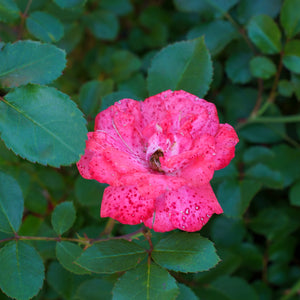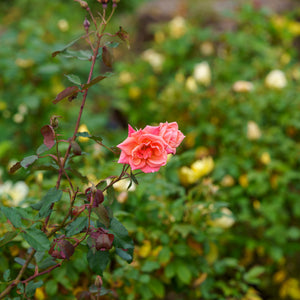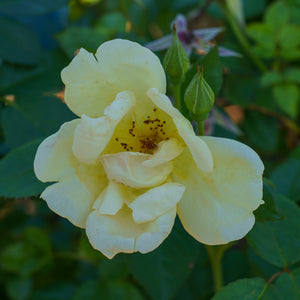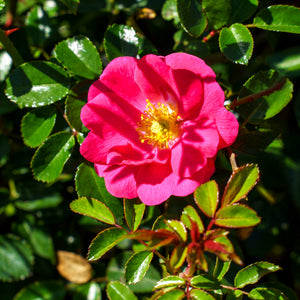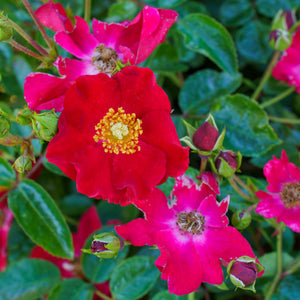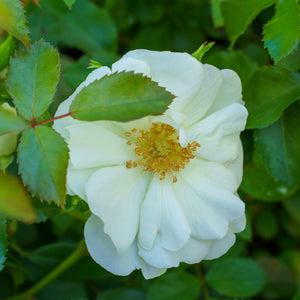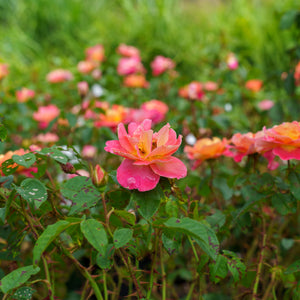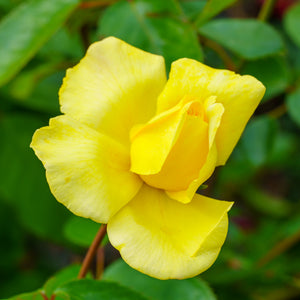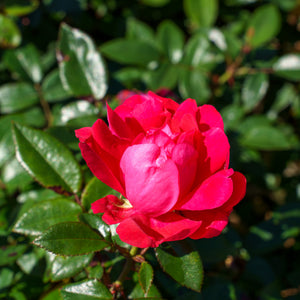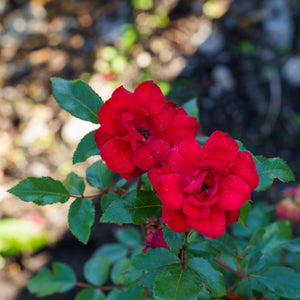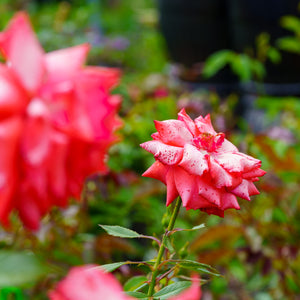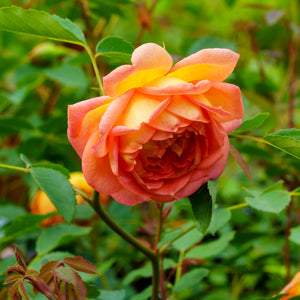The Rose Guide
In the realm of horticulture, roses stand as timeless ambassadors of beauty, each petal telling a story of grace and sophistication. These enchanting blooms, with their diverse array of colors, forms, and fragrances, have long held a revered place in gardens worldwide, symbolizing love, passion, and enduring elegance. From the classic allure of hybrid teas to the nostalgic charm of old garden roses, the world of roses unfolds as a captivating journey for gardeners. In this exploration, we delve into the artistry of planting and nurturing these iconic flowers, offering insights into the cultivation of vibrant rose gardens, fragrant borders, or singular, spectacular specimens. As you embrace the allure of roses, let your garden become a canvas for the timeless charm and romanticism that these blooms bring, transforming your outdoor sanctuary into a haven of botanical sophistication.
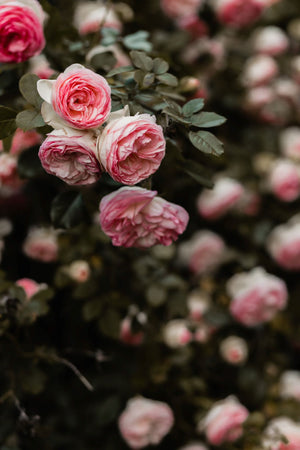
About
Roses, a timeless and enchanting genus nestled within the Rosaceae family, stand as a symbol of love, beauty, and cultural significance. Boasting a rich tapestry of varieties, these iconic flowers have captured the hearts of enthusiasts and poets alike, gracing gardens with their unparalleled elegance and fragrance. With over a hundred recognized species and innumerable cultivars, roses are cultivated worldwide, becoming a universal emblem of both romance and horticultural artistry.
This diverse genus unfolds its petals in a breathtaking array of colors, from classic reds and pinks to delicate whites, yellows, and even mesmerizing blues. Beyond their visual splendor, roses emanate a captivating fragrance that varies from subtle and sweet to bold and spicy, creating an olfactory symphony that complements their visual allure.
One of the distinctive features of roses is their adaptability to a wide range of climates and soil conditions. From the frost-kissed landscapes of temperate regions to the sun-drenched expanses of subtropical zones, roses thrive with resilience and grace. This adaptability has enabled their integration into various garden styles, from formal rose gardens to informal cottage landscapes, proving their versatility as both standalone features and companions to other garden denizens.
Roses, with their lush foliage and captivating blooms, contribute not only to the aesthetic charm of gardens but also play a crucial role in supporting local ecosystems. Their nectar-rich flowers beckon to bees, butterflies, and hummingbirds, fostering pollination and enhancing biodiversity. The dense foliage provides shelter for insects and birds, creating a harmonious microcosm within the garden.
As the seasons unfold, roses undergo a dynamic transformation, offering visual interest year-round. While deciduous varieties shed their leaves in winter, some evergreen species maintain their vibrant greenery throughout the year. The changing hues of leaves and the rhythmic cycle of blooms contribute to a garden's ever-evolving beauty.
Cultivating roses is an art that requires an understanding of their unique needs. While they typically thrive in well-drained soil and bask in the sunlight, certain varieties showcase their adaptability by flourishing in partial shade. Pruning, proper feeding, and pest management are essential elements of rose care, ensuring a healthy and vigorous display of blooms.
From classic tea roses to the hardy landscape varieties, each rose cultivar brings its own charm to the garden. Whether adorning a romantic courtyard, gracing a trellis, or forming an aromatic hedge, roses have the power to elevate any outdoor space into a realm of timeless beauty.
By embracing the diversity and allure of roses in your garden, you not only invite a sense of romance and sophistication but actively contribute to the preservation of these botanical treasures. Join the tradition of cultivating roses, and let your garden bloom with the timeless elegance and fragrant poetry of these extraordinary flowers.
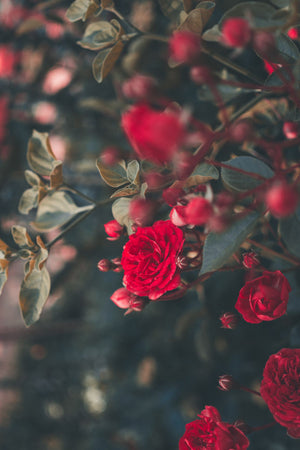
Planting
Roses, with their timeless beauty, demand thoughtful consideration during the planting process to ensure their successful establishment and flourishing growth. Here are essential guidelines for planting and caring for roses:
Soil: Roses thrive in well-draining soil that is enriched with organic matter. Aim for a slightly acidic to neutral soil with a pH between 6.0 and 7.0. Prepare the planting site by loosening the soil and incorporating ample amounts of compost or well-rotted manure. This not only improves drainage but also provides a nutrient-rich foundation for your roses.
Sunlight: Roses are sun-loving plants, preferring full sun exposure. Choose a planting location that receives at least six hours of direct sunlight each day. However, roses are adaptable and can tolerate partial shade, making them versatile for various garden settings. In hot climates, a bit of afternoon shade can be beneficial to prevent stress on the plants.
Watering: Adequate and consistent watering is vital, especially during the initial stages of rose establishment. Water deeply immediately after planting, and maintain regular irrigation throughout the first year. Adjust watering frequency based on weather conditions, aiming for deep and thorough watering once or twice a week. Be cautious not to overwater, as this can lead to root rot.
Mulching: Applying a layer of organic mulch around the base of your roses provides numerous benefits. Mulch helps retain soil moisture, suppresses weeds, and regulates soil temperature. Utilize materials like wood chips, bark, or compost, and maintain a gap between the mulch and the base of the plant to prevent excess moisture accumulation.
Pruning: Roses benefit from regular pruning to maintain a strong and balanced structure. Focus on removing dead, damaged, or crossing branches. The optimal time for pruning is late winter or early spring when the plant is dormant, just before new growth begins. This minimizes stress on the roses and encourages healthy development.
By following these fundamental planting and care guidelines, you can ensure the successful establishment and robust growth of your roses. These practices will contribute to the longevity and beauty of your garden, allowing your roses to thrive and adorn your outdoor space with their enduring elegance.
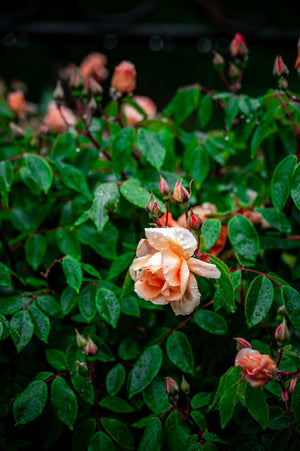
Care
Roses, with their enduring beauty, thrive and flourish when provided with specific care practices. Here are comprehensive guidelines for the care of roses, ensuring they grace your garden with vitality and timeless charm:
Watering: Provide consistent and moderate watering during the growing season, aiming for approximately one inch of water per week. Adjust the watering regimen based on natural rainfall and environmental conditions. Deep and thorough watering is essential to encourage robust root development. Avoid shallow watering to prevent stress and dehydration. In periods of drought or high temperatures, consider additional watering to maintain adequate soil moisture.
Pruning: While roses typically require minimal pruning, selective care enhances their overall health and aesthetic appeal. Remove dead or damaged branches to preserve vitality and appearance. Shaping can be employed to achieve the desired size and form. Pruning is best done during late winter or early spring, before new growth begins. Use clean, sharp pruning tools to minimize the risk of harm. Deadheading spent flowers can stimulate new growth and potentially trigger a second blooming, extending the flowering season.
Fertilizing: Fertilization is crucial for promoting vibrant growth and abundant flowering in roses. Apply a balanced, slow-release fertilizer in spring or early summer, following the manufacturer's recommended application rates and timing. Avoid over-fertilizing, as it can negatively impact the root system. When in doubt, opt for a conservative approach to ensure the health and longevity of your roses.
Soil and Sunlight: Roses thrive in well-drained, moist soil and flourish in full sunlight. While they tolerate various soil types, ensuring optimal drainage is essential for their well-being. Mulching around the base of the plants contributes to moisture retention and regulates soil temperature, creating a conducive environment for healthy growth.
Pests and Diseases: Although generally resilient, roses can face challenges from pests like aphids, borers, and diseases like powdery mildew or black spot. Regular monitoring for signs of damage or disease is crucial. Swift action with appropriate insecticides or fungicides, when necessary, will help safeguard the health and vitality of your roses.
By following these comprehensive care guidelines, your roses will thrive, becoming a perennial source of beauty, fragrance, and majesty in your garden for years to come.
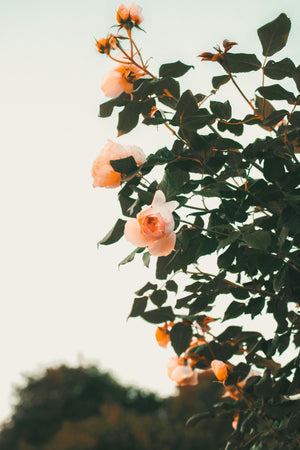
How To Use
Roses, with their graceful and versatile characteristics, provide a myriad of possibilities to enhance your landscape. Tailor their beauty to your advantage with these insightful recommendations:
Statement Centerpiece: Elevate your garden by featuring roses as a stunning focal point. Plant a cluster of these timeless flowers in an open area to showcase their enchanting blooms and elegant foliage. Alternatively, create a dynamic display by mixing different rose varieties, ensuring a continuous visual symphony throughout the seasons.
Border Brilliance: Define and elevate the edges of your garden beds with the timeless elegance of roses. Their compact and bushy growth makes them perfect for creating borders that bring refinement to your outdoor space. Let them weave a tapestry of color and texture along pathways or around other garden features, providing a touch of sophistication.
Vibrant Hedges: Transform functional features into eye-catching elements by planting roses as hedges. Their dense growth habit not only offers privacy but also bursts of color. Regular shaping maintains a neat appearance, allowing these vibrant hedges to become living boundaries that redefine the aesthetics of your garden.
Container Elegance: Embrace creative container gardening by cultivating roses in pots or containers. This flexibility allows you to move these delightful flowers to different areas, adding bursts of color to patios, decks, or balconies. Experiment with various container sizes and shapes to customize your outdoor space and create a portable masterpiece.
Companion Planting: Combine the beauty and functionality of roses by using them as companion plants. Their vibrant foliage and flowers complement a variety of other plants. Integrate roses into mixed borders or group them with perennials to create visually pleasing and ecologically supportive plant communities, enhancing the overall diversity of your garden.
Whether you're envisioning a statement centerpiece, a border, a hedge, or a potted masterpiece, roses bring elegance and versatility to your landscape. Consider their moderate size, exquisite blooms, and adaptability when planning your garden. With roses, you're not just landscaping; you're crafting a masterpiece that evolves with the seasons, adding a touch of sophistication to your outdoor haven.
Conclusion
In the symphony of garden design, roses emerge as versatile and enchanting contributors, offering a harmonious blend of colors, forms, and practical applications to elevate your outdoor haven. With their timeless elegance and adaptability, roses infuse a touch of refined beauty into diverse garden settings, weaving a captivating narrative within the canvas of your landscape. From the timeless blooms of spring to the lush foliage of summer and the warm hues of fall, roses paint a living masterpiece that ensures your garden is a perpetual work of art.
Beyond their visual allure, roses play multifaceted roles in your outdoor sanctuary. Whether standing as a striking centerpiece, gracing garden borders, forming vibrant hedges, or becoming potted masterpieces, these flowers seamlessly intertwine aesthetics with practicality. Crafting privacy, defining spaces, and enhancing the overall charm of your garden, roses exemplify the idea that beauty can serve a purpose.
A testament to their versatility, roses make excellent companions to a variety of plants. Their ability to thrive in mixed borders or complement other perennials showcases their compatibility within diverse plant communities. With roses as integral members of your garden ensemble, you're not merely cultivating plants; you're nurturing a harmonious ecosystem.
Embrace the ever-changing melody of your garden with roses as key players. Their resilience and adaptability ensure that your landscape remains dynamic, responding harmoniously to the rhythm of the seasons. By incorporating roses, you're creating an outdoor space that resonates with life, color, and the subtle charm of nature.
In the realm of garden design, roses transcend being mere flowers; they are living notes in the melody of your landscape. With thoughtful planting, care, and creative deployment, these versatile blooms can be the crescendo that elevates your outdoor space to a masterpiece. Nurture your garden with the dedication it deserves, and let roses be the timeless refrain that brings you joy for years to come.


